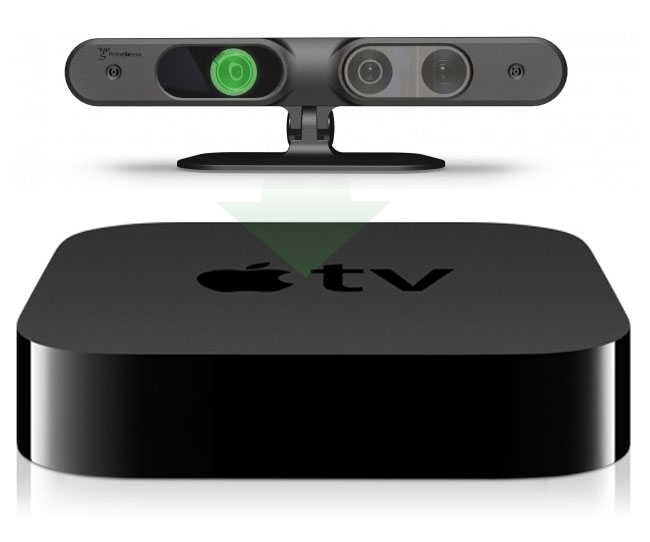
Robohub.org
PulsedLight, Project Tango, Occipital and the Prime Sense problem

Ever since Apple bought Prime Sense, roboticists have been asking what’s going to fill the gap. Robots need to know where they are and what’s around them. The Carmine, and the unveiled but undelivered Capri from Prime Sense, were the smallest, cheapest and most effective ways of mapping the environment available. Microsoft’s first Kinect was based on Prime Sense technology, and it enabled a raft of robotics developments, as did the Asus Xteon. But with the core Prime Sense technology off the market now, there are questions about what will fill the gap, and what will some crowd funded projects use to fulfill their campaigns. There are some interesting projects that promise partial or future answers though, like the LIDAR-Lite from PulsedLight and Google’s Project Tango.
Prime Sense was acquired by Apple in November 2013 for around $350 million. As well as their newly announced Capri, Prime Sense were working on ever smaller 3D sensing chips that could eventually be integrated into mobile phones and tablets. This would effectively turn mobile devices into perceptual computing devices, capable of interpreting a wider range of information, as well as enhancing entertainment. An example is using your phone to record your children’s height simply by taking a photo, interior space mapping, scanning for 3d printing, or gestural interactions rather than touch screens.
The new Capri is 10 times smaller than the Carmine used in the first Kinects, and able to be used as an embedded system. It’s USB powered, with a VGA depth map of 640×480, a Field of View 57.5×45 and a range of .8m to 3.5m. And it’s now owned by Apple. As recently as January at CES2014, the robotics community was talking about the lack of replacements available in the immediate future. Ted Larson from OLogic, a robotics/consumer electronics R&D firm who have been working on Google’s Project Tango, said that there was nothing affordable and available right now to drop into the gap left by Prime Sense technologies.
“Soft Kinetic is about the only real competitor to Prime Sense. Their technology is in the new Intel data camera on display at CES2014, however the off-the-shelf Soft Kinetic solutions are still expensive, bulky and big. And the creative cam solution is really only suitable for a very short range, around about a meter. So like the Leap, it’s really only useful when you’re in front of your computer.”
“Since the Project Tango device allows of 3D depth sensing, mapping and localization, all in one package, OLogic is extremely hopeful and interested in applications of it as a replacement for many components of a robot, all-in-one, which negates the need for a 3D sensor in a stand-alone configuration.” said Larson.
Although it promises much for the future, Project Tango is not an immediate solution to the Prime Sense problem. Larson was hoping to find a ready-to-go, similarly priced alternative to Prime Sense in the new technologies on display at CES2014 but came away disappointed. One of the partial solutions that’s been creating some excitement is the LIDAR-Lite from PulsedLight, which improves distance sensing, but it doesn’t seem to offer any wide scanning ability.
The LIDAR-Lite is an optical distance measurement solution, with a range of between 4 and 40 meters depending on beam angle, at a price point of about $80. The form factor is small, measuring 51mm x 30mm by 39mm including optics. And the LIDAR-Lite will suit projects where low power consumption is important, using a 5vdc power source and drawing 100 milliamps when measuring and less than 10 milliamps when idle. This makes it perfect for some UAV and robotics applications and it’s no surprise that the crowdfunding campaign for the device has already met target with over a week still to run.
PulsedLight takes distance range finding from the expensive, closed solution that it is today to small, cheap and open. This is tremendously appealing to us at 3D Robotics, as is the potential this has for getting us to truly autonomous UAVs without relying solely on GPS.
– Chris Anderson, CEO of 3D Robotics
The LIDAR-Lite is on the Dragon Innovation crowd funding platform, the first crowd funding platform purely for hardware projects, including robotics. Some of Dragon’s previous success stories include Romotive, Sifteo, Orbotix and Dash Robotics, as well as the uber popular Pebble. No surprise really that robotics is featured, as Dragon is in many ways an iRobot spinoff. Cofounders Herman Pang and Scott Miller are both veterans of iRobot’s engineering team and manufacturing operations in Asia. They saw the need that hardware startups had for manufacturing assistance. Starting out as a consultancy in 2009, Dragon Innovation has added a crowd funding platform and offers design assistance and manufacturing support.
Companies on the Dragon crowd funding site have had to go through Dragon’s premanufacturing program, which should guarantee that they ship on time and under budget. Pebble is a great example of a company that succeeded wildly on Kickstarter and then annoyed backers by shipping very late. Pebble now use Dragon for manufacturing.
“We envision Dragon Innovation as the official home for hardware, providing entrepreneurs everything they need to launch products and scale their companies,” said Scott N. Miller, CEO and co-founder. “By working closely with great entrepreneurs from the very beginning, Dragon can provide a full spectrum of resources and experience to help companies succeed. It makes natural sense for us to extend this commitment in the form of funding to help hardware entrepreneurs achieve success.”
LIDAR-Lite is made by PulsedLight, a company founded in 2011 by optical engineer Bob Lewis and Dennis Corey, with the goal of creating a very small and cheap, low-power, high performance optical ranging sensor. Depth measurement techniques using light, as opposed to using microwave or ultrasonic waves, fall into four main areas: triangulation or stereoscopic vision, linear laser scanning, structured light coding or Time-of-Flight.
Where the Carmine and Capri from Prime Sense use structured light coding for depth measurement, the new generation of Microsoft Kinects and the LIDAR-Lite use Time-of-Flight, mapping by calculating the time it takes for light to bounce off objects. This requires powerful light, a very sensitive detector, and a very precise clock. Until now, this has meant using lasers in potentially dangerous and much more expensive devices. LIDAR-Lite uses edge-based signal reconstruction methods, similar to that used in radar and some special signal correlation processing, which enables them to:
- Use LEDs and off-the-shelf components
- Process very weak return signals
- Calculate distance without having to directly measure it
- Do it on a single system-on-chip solution
- Reconfigure via software control
The newly announced stretch goal for PulsedLight’s campaign will mean adding lasers if funding reaches $75,000. And at time of writing the project is at $61,424 with 7 days to go, so it’s possible that Pulsed Light will convert all LIDAR-Lites to lasers not LEDs. This will enable greater range, smaller beam and faster measurement. The extra funds will be needed to help the team obtain the eye safety certification that laser devices need.
Meanwhile, most Occipital backers are still waiting for their Structure Sensors. The Structure Sensor aims to let you capture the world in 3D on your iPad, for modeling or AR or games. Occipital launched the device on Kickstarter in November 2013 and raised more than a million dollars on a $100,000 campaign. This very popular device has impressed at Make, CES and SxSW, but it’s basically a commercially packaged Capri.
http://youtu.be/ZN-9Ub9S7Cs
Occipital was supposed to ship beta units in December and fulfil the most of the backers in Feb 2014 but are well behind schedule, with the beta units just going out. Occipital recently attempted to reassure backers by saying that they were working with Prime Sense to ensure that they could fulfill orders for now, although components may change in the future. So while we’re waiting for Google’s Project Tango to reach the real world, PulsedLight might help keep roboticists ‘on the map’, and we still seem to have a bit of a Prime Sense problem.
tags: c-Research-Innovation, Crowd Funding, Mapping-Surveillance




